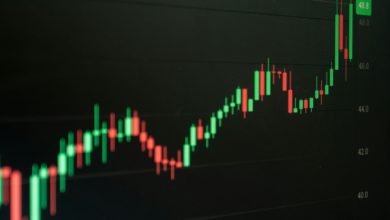Pennexx Has Produced a New Promotional Video, is Providing its Shareholders Progress Updates Regarding Its First Quarter Profits, Debit Cards, Website Evolution, Audit, and EDGAR Filings
[ad_1]
Philadelphia, PA –  (NewMediaWire) – April 30, 2021 – Pennexx (OTC: PNNX), has produced a new shareholder promotional video that explains the benefits of its https://yoursocialoffers.com (YSO) platform that can be viewed at https://www.youtube.com/watch?v=f38xFyFkt14.
(NewMediaWire) – April 30, 2021 – Pennexx (OTC: PNNX), has produced a new shareholder promotional video that explains the benefits of its https://yoursocialoffers.com (YSO) platform that can be viewed at https://www.youtube.com/watch?v=f38xFyFkt14.
Pennexx is also proud to announce they have completed their initial financials and will be reporting a profit for the first quarter.
Pennexx can now issue digital debit cards and will be sending personalized plastic cards to consumers in the near future. These cards represent a fantastic way for consumers to benefit from the YSO platform. The debit cards allow YSO to provide innovative universal rewards and offers to be saved directly on the consumer’s card at participating merchants.
The company has begun the redesign of the YSO website, increasing the usability and value for consumers. Pennexx believes this website is a tremendous evolution in the nature of the platform and one that will increase the company’s success.
Vincent Risalvato, CEO, says, “Our audit team has done a fantastic job, and we believe our auditors, Assurance Dimensions PCAOB, will be able to complete the audit by the end of May.”
Pennexx has begun the process of preparing to upload its financials to EDGAR. The financials will become readily available on the financials tab at OTC Markets https://www.otcmarkets.com/stock/PNNX. Many analysts and shareholders depend on EDGAR data for their decision-making process.
For More Information
Pennexx will do their best to openly and publicly answer your questions and concerns via social media on Twitter https://twitter.com/pennexx @pennexx, or you may email info@pennexx.net.
You may also follow them on Twitter;
Mr. Risalvato (@vrisalvato) https://twitter.com/vrisalvato,
Joe Candito (@jcandito) https://twitter.com/jcandito, and
Ms. Sunny Sweet (@sunnysweettweet) https://twitter.com/sunnysweettweet.
About Pennexx Foods Inc.
About Pennexx Foods Inc. (PNNX: OTCMKTS US). Pennexx, through its wholly-owned subsidiaries, is a holding company within the Software/Internet Industry focused on social media, prepaid debit cards, artificial intelligence, targeted marketing, and consumer rewards.
About YourSocialOffers.com (YSO)
YSO, is a wholly-owned subsidiary of Pennexx. YSO is our proprietary technology that greatly reduces (if not eliminates) our client companies cash outlays for advertising. YSO provides digital word-of-mouth recommendations from a person to their followers and friends on social media. Word-of-mouth referrals are the best type of referrals. It’s not a paid social media advertisement. Our merchants reach new customers through social media without a dollar spent on getting their message out. The merchant only pays for advertising when it works by discounting their products or services when a customer accepts the offers that they share. Their objective is to ask: “Why pay for advertising unless it actually works?”
Safe Harbor Act: This release may contain “forward-looking statements” within the meaning of Section 27A of the Securities Act of 1933, as amended, and Section 21E the Securities Exchange Act of 1934, as amended and such forward-looking statements are made pursuant to the safe harbor provisions of the Private Securities Litigation Reform Act of 1995. “Forward-looking statements” describe future expectations, plans, results, or strategies and are generally preceded by words such as “may,” “future,” “plan” or “planned,” “will” or “should,” “expected,” “anticipates,” “draft,” “eventually” or “projected.” You are cautioned that such statements are subject to a multitude of risks and uncertainties that could cause future circumstances, events, or results to differ materially from those projected in the forward-looking statements, including the risks that actual results may differ materially from those projected in the forward-looking statements as a result of various factors, and other risks identified in a company’s annual report.
For additional information, you may also visit our website at https://yoursocialoffers.com or https://pennexx.net or call 866-928-6409. Please follow us on Twitter @Pennexx.
[ad_2]




